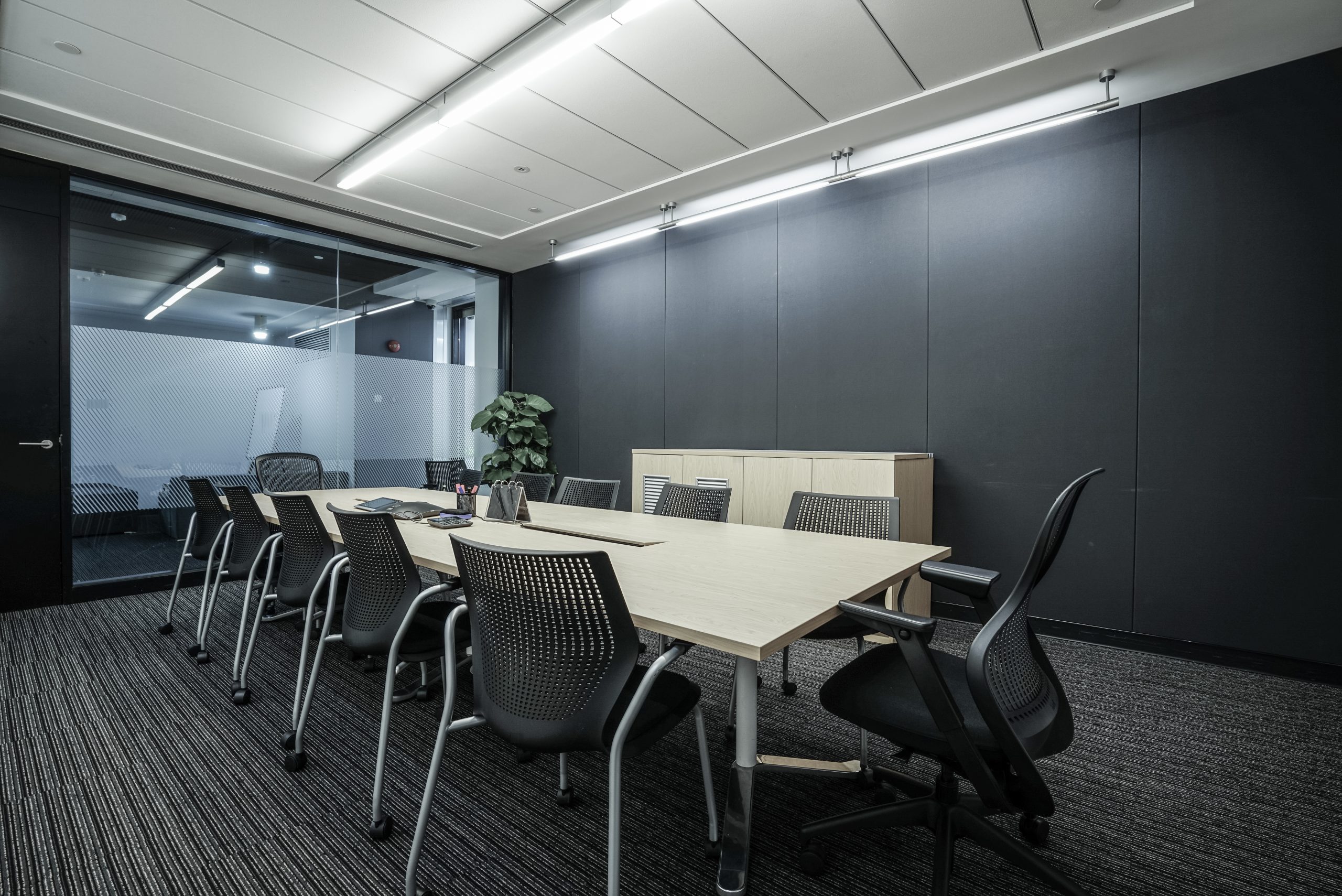In the ever-evolving domain of office interior design, wall panels are becoming a focal point for both aesthetic enrichment and functional innovation. These elements are crucial in turning monotonous office environments into lively centres of creativity and teamwork. With a wide array of designs available, contemporary wall panels not only boost visual appeal but also deliver practical advantages, such as enhanced acoustics and clear spatial demarcations.
As office spaces increasingly adopt more fluid and adaptable layouts, the importance of wall panels is accentuated. The adoption of new materials and textures, coupled with strategic use of natural light, has spurred the evolution of wall panel designs. This progression not only mirrors the modern principles of office aesthetics but also enhances user well-being, fostering a sense of community and inclusiveness.
The latest trends in wall panels are closely aligned with an office’s branding and values, taking into account local design variations. From three-dimensional textures that add vitality to a room to clever adaptations that accommodate diverse working styles, wall panels are key to crafting a superior workplace experience for both clients and employees.
Major Insights
- Wall panels substantially improve the aesthetics and functionality of office spaces.
- Contemporary designs adapt to the changing dynamics of workspaces and user health.
- They provide adaptable solutions that align with brand identity and local preferences.
Rising Trends in Office Design
As office environments evolve, designers are prioritizing sustainability, adaptability to hybrid working models, and enhanced technological integration.
Eco-Friendly Materials in Wall Designs
Sustainability leads today’s office design trends, with material choices reflecting an eco-friendly commitment. Designers are increasingly using sustainable materials like bamboo, reclaimed wood, and recycled plastics in wall panels, reducing environmental impact while adding aesthetic warmth and texture.
Hybrid Office Layouts
Hybrid offices are defining the future of workplace environments, merging traditional setups with the flexibility of remote working. Wall designs now feature movable panels and modular systems that adapt seamlessly to various needs, allowing for easy configuration of collaborative and private spaces.
Technological Enhancements
Technological advances are being incorporated into wall panel designs, altering interactions within the workplace. Features like integrated touchscreens for managing meeting rooms, soundproofing technologies, and built-in charging stations are shaping modern office dynamics, creating a more streamlined and productive atmosphere.
Innovations in Materials and Textures
Modern office interiors are witnessing revolutionary uses of materials and textures to enhance both aesthetics and functionality. Designers are employing wood, MDF, natural elements, and concrete to create spaces that are visually captivating and offer textural depth.
Wood and MDF Variants
In the world of wall panels, wood and MDF (Medium-density fibreboard) remain preferred materials due to their natural appeal and versatility. Wood panels are available in a range of finishes from light ash to rich walnut, each adding a distinct feel to office settings. MDF is favoured for its smooth surface, compatible with veneers and laminates for vibrant colours and detailed geometric designs. These materials not only enhance aesthetics but also promote sustainability, sourced from responsibly managed forests.
- Available Finishes:
- Ash
- Oak
- Walnut
- Painted MDF
- Veneer
Natural and Raw Materials
Integrating natural materials into wall panel designs enhances biophilic connections, improving employee well-being. Using materials like exposed brick, stone, and bamboo introduces texture and an unrefined appeal to the design theme. Commonly, offices might feature an exposed brick wall for rustic charm or bamboo panels for a serene, natural ambiance.
- Natural Textures:
- Stone
- Bamboo
- Cork
- Brick
Concrete and Geometric Designs
Concrete is increasingly popular for its minimalistic aesthetics and durability, particularly in contemporary office spaces. Its understated tones and textured finish provide an industrial look that complements modern design sensibilities. Likewise, wall panels featuring geometric patterns add a dynamic and stylish element to interiors, often serving as striking focal points that stimulate creativity.
- Concrete Variations:
- Smooth
- Textured
- Patterned
- Geometric Motifs:
- Hexagonal
- Chevron
- 3D Effects
The Role of Natural Light
Maximising natural light in office interiors is crucial for enhancing employee well-being and optimising workspace functionality. Innovative designs that amplify daylight are not just a trend but a strategic approach to boost productivity and enhance the overall office environment.
Promoting Wellbeing with Natural Light
Natural light is essential in the workplace for improving mood, reducing fatigue, and increasing comfort. Offices designed with abundant natural light support employees’ circadian rhythms, contributing to better sleep and heightened alertness. Studies show that natural light can significantly enhance cognitive function, making it a fundamental element in office design focused on well-being.
Strategies to Maximise Daylight
To enhance natural light in offices, architects and designers employ several strategies. These include:
- Optimal Workstation Placement: Positioning desks to maximize daylight exposure.
- Glass Partitions: Using glass walls to allow light to permeate through the office.
- Reflective Surfaces: Utilizing materials that reflect light to brighten spaces further.
- Strategic Colour Choices: Choosing wall colours that amplify light without overwhelming the senses.
These design choices make natural light a transformative feature for contemporary office interiors, serving both functional and aesthetic purposes.
Encouraging Collaboration and Community
The design of office interiors significantly influences how individuals collaborate and connect within the workplace. Innovative wall panel designs are vital in fostering environments that promote teamwork and community among employees.
Integrated Meeting Rooms
Meeting rooms equipped with integrated wall panels support various collaborative activities. These panels often feature writable surfaces or screens for presentations, while glass partitions provide an open atmosphere yet maintain sound privacy for confidential discussions.
- Features of Integrated Meeting Room Panels:
- Soundproofing for private meetings.
- Translucent or clear materials to enhance spatial perception.
- Modular designs for adjustable room sizes.
Coworking Space Designs
Coworking spaces benefit from vibrant and flexible wall panels that reflect the creative and entrepreneurial energy of their users. These panels often feature modular systems that can be rearranged to accommodate evolving needs.
- Design Traits for Coworking Spaces:
- Interactive surfaces for sharing ideas and projects.
- Integrated shelving for communal resource access.
- Diverse colours and textures to define different areas within the space.
Social and Recreational Areas
Social and recreational zones in offices are essential for building community. Wall designs in these areas might include themed panels, such as those with sporty motifs or pub-like decor, creating unique environments that foster casual interactions and relaxation.
- Design Elements for Social Zones:
- Durable materials for high-traffic areas.
- Visual signals like images or colours that indicate the area’s function.
- Layouts that support social activities, from coffee corners to gaming areas.
Adapting Design for Flexibility
In today’s office interiors, flexibility is crucial for accommodating various work styles and purposes. Design features that offer modularity and multipurpose functionality are key to creating spaces that adapt to flexible schedules and hybrid work models.
Flexible Wall Panel Systems
Flexible wall panel systems are fundamental to modern office design. These systems enable spaces to be quickly reconfigured for different uses, from collaborative projects to private work. Key features include:
- Modularity: Panels can be moved, added, or removed to meet changing needs without major renovations.
- Technology Integration: Smart technology options enhance panel functionality, integrating seamlessly with the office’s digital infrastructure.
Versatile Furniture Options
Furniture also plays a vital role in the flexibility of an office. Highlights include:
- Convertible Designs: Multi-functional furniture like adjustable desks support various work preferences, accommodating both sitting and standing positions.
- Easy Storability: Lightweight, stackable or foldable furniture pieces allow for quick spatial reconfigurations, suitable for dynamic work environments.
These design approaches help offices remain agile and responsive to changing work patterns while promoting productivity and collaboration.
Wall Panels as Decorative Features
In contemporary office settings, wall panels not only serve functional roles but also act as powerful decorative elements that emphasize brand personality and enrich the workspace with visual and conceptual depth.
Highlighting Brand Identity
Office interiors often use wall panels to express a company’s identity. By selecting the right textures, colours, and patterns, these panels become more than mere walls; they transform into narratives that reflect a brand’s ethos and aesthetic vision.
Innovating Beyond Space with Samsen
Samsen furniture is renowned for its ‘Beyond Space’ concept, which transcends traditional design boundaries to expand spatial perceptions. Wall panels are integral to this philosophy, turning functional areas into visual spectacles that enhance and redefine the notion of space through innovative design and strategic positioning.
Inspiration from Note Design Studio
The Swedish collective Note Design Studio provides a wealth of inspiration for wall panel designs that marry function with decorative elegance. Their approach, featuring clean lines and subdued yet warm colour palettes, transforms spaces into modernist scenes where each panel contributes to an environment that is as motivational as it is practical.
Design Considerations for Different Regions
Local design considerations are crucial for crafting relevant and effective office interiors. Factors like climate, cultural norms, and regional trends guide the choice and application of wall panel designs in various international business centres.
Meeting the Demands of New York and New Jersey Offices
In New York and New Jersey, office interiors reflect the fast-paced and sophisticated nature of these East Coast hubs. Wall panelling in these regions often includes high-quality materials and sleek finishes to echo the avant-garde, cosmopolitan atmosphere. Acoustic wall panels are especially useful in reducing the ambient noise typical of such vibrant areas.
Californian Office Design Preferences
California workspaces prioritize style and sustainable functionality. Offices in this state prefer using sustainable materials like reclaimed wood or low VOC-emitting materials. Natural light is essential, with designs often incorporating translucent or frosted glass panels that maximize sunlight while maintaining privacy.
High-Tech Innovations in Singapore Office Designs
Singapore office designs integrate a global perspective with a preference for high-tech solutions and functionality. Wall panels may include features like built-in interactive displays and are made from materials suitable for the tropical climate, which includes dealing with high humidity levels that could otherwise damage certain materials.
Enhancing the Client and Employee Experience
Revitalising office interiors with trending wall panel designs significantly influences both client and employee experiences. These innovative elements meet various business needs while ensuring comfort and functionality, essential in the workplace reshaped by the pandemic.
Creating Tailored Environments for Business Requirements
Today’s businesses require office interiors to be more than mere workplaces; they should reflect the brand’s identity and values. Three-dimensional wall panels, for instance, provide both visual allure and acoustic advantages, fostering an environment that supports focused work and client interactions. Designs are chosen to resonate with a brand’s image, incorporating features that speak to innovation and creativity.
Focusing on Comfort and Functionality
With an increased emphasis on remote working, office designs now prioritize employee wellbeing. Wall panel choices not only impact visual aesthetics but also enhance the overall comfort of the workspace. This includes:
- Ergonomic Panel Designs: These improve acoustic comfort, minimizing distractions.
- Biophilic Wall Designs: Incorporating natural elements to promote mental health and wellbeing.
As employees spend significant time indoors, it’s crucial to create spaces that are both inviting and beneficial to their mental health. Office interiors must balance practical needs with an environment that supports and boosts the well-being of all users.
Implementing Cutting-Edge Solutions
The inclusion of state-of-the-art wall panel designs is critical when refreshing office interiors. Through interactive features and considerations for post-pandemic realities, these solutions enhance both functionality and aesthetic appeal in modern workplaces.
Interactive Wall Panels and Features
More and more office interiors are adopting interactive wall panels with integrated smart technology. These panels function not just as decorative elements but as practical tools for a dynamic work environment. They may include:
- Touch-sensitive Surfaces: Enable employees to interact with digital screens for presentations or collaborative tasks.
- Integrated LED Displays: Provide customizable announcement boards or mood-enhancing visuals.
Such technology-rich panels also support room wayfinding solutions and can provide critical data insights through connected workplace management systems.
Adjustments for Post-Pandemic Office Designs
The pandemic has required significant changes in office design. Wall panels now play a role in:
- Health and Safety: Panels with antibacterial surfaces or materials that are easy to clean help maintain high hygiene standards.
- Spatial Dividers: Wall panels are used to create physical barriers, helping with social distancing while maintaining design integrity.
These adaptations underscore the importance of materials that support workforce well-being, highlighting the ongoing need for sustainability and cleanliness in office design during and after health crises.
Frequently Asked Questions
This section addresses common questions about the evolution of wall panelling in office interiors, focusing on the integration of style and functionality.
What are the latest trends in wall panelling for office interiors?
The newest trends in office wall panelling include three-dimensional designs that produce captivating patterns and textures. Asymmetrical panels provide a modern and distinctive look, creating a dynamic and creative workspace.
How can you incorporate creative wall designs in a professional office setting?
Creative wall designs in a professional environment can be achieved using asymmetrical panelling, incorporating contrasting colours, and employing materials like MDF or slat wall panels for a contemporary yet formal office ambiance.
Which design ideas are currently popular for professional office wall decor?
Current preferences for professional office wall decor include bold designs with contrasting colours and shapes. Popular choices feature wooden accents and glass partitions, often arranged in dynamic configurations that enhance the workspace.
Can you provide examples of innovative back wall designs for small offices?
Innovative back wall designs for small offices include geometric patterns, acoustic panels that double as visual art, and integrated shelving within the panelling for functionality and space efficiency.
What are some modern approaches to office wall design that combine functionality and style?
Modern office wall designs blend functionality with style through the use of acoustic panels, writable and magnetic walls for brainstorming, and LED-lit panels that both light up and decorate the space.
How can existing wall panelling be updated to look modern and on-trend?
Existing wall panelling can be updated by painting it in contemporary colours, adding trim or moulding for a three-dimensional effect, or mixing materials like metal with traditional wood to achieve a more current and trendy appearance.







